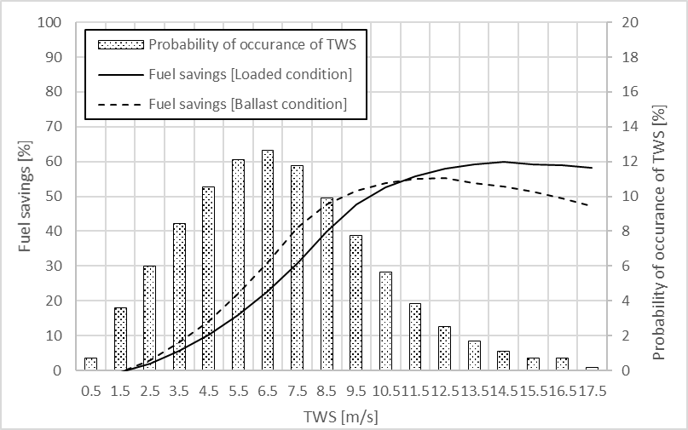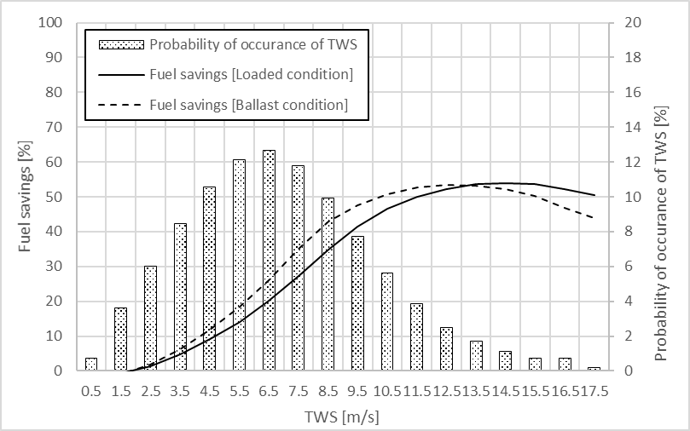
Distribution of relative fuel savings over true wind speed in ballast and loaded condition for two ship types showing larger fuel savings in ballast condition at the lower wind speeds. At higher wind speeds the losses increase and savings start to decrease.
 Wind-powered shipping increasingly popular
Wind-powered shipping increasingly popular
The uptake of wind propulsion as a solution to reduce fuel consumption and greenhouse gas emissions is accelerating.
Compared to future alternative fuel solutions, the technology can be applied now and the required ‘fuel’ – wind – is freely available. The challenge with wind propulsion is that the obtained savings are strongly dependent on the operation of the vessel.
Additionally, an important aspect affecting the operational performance are the wind statistics, which vary strongly depending on the route. However, MARIN can provide a quick insight into the statistics for a bulker type vessel on a customised route with its ‘Blue Route application’ (http://blueroute.application.marin.nl).
When predicting the savings from wind propulsion to comply with energy efficiency regulations, such as for the EEDI, only one combination of speed and loading condition is considered. In reality the vessel will operate at various conditions, often at a lower ship speed and reduced draught.
We investigated the changes to the performance for various loading conditions. Our findings showed that the fuel savings from wind propulsion can increase when a vessel is operating at a lower ship speed and reduced draught, due to reduced calm water resistance, while the wind propulsion thrust remains more or less constant. However, the forces and moments acting on the hull and rudder change. This generally leads to a different sailing equilibrium, increased losses and increased leeway, rudder and heel angles. Still the net effect on the savings was positive for the two ship types studied. A 5% and 4% increase in relative savings in ballast condition compared to the loaded condition was observed for a 300 m bulk carrier and a 120 m coaster respectively.
For a complete picture of the operational wind-assisted savings, it is therefore interesting to analyse the performance over the operational profile of the vessel and the sailed route.
Joost Schot | j.j.a.schot@marin.nl

